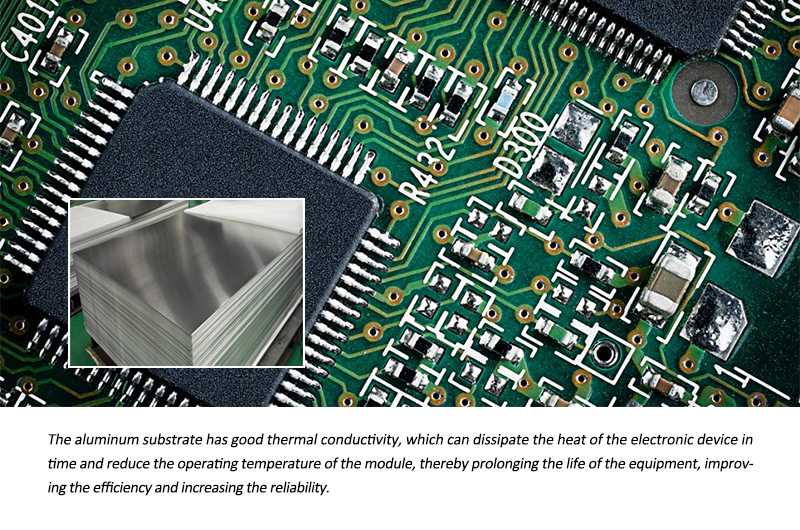With the rapid development of electronic products to be light, thin, small, high-density and multi-functional, the requirements for heat dissipation of printed circuit boards (PCBs) are getting higher and higher. The aluminum substrate has good thermal conductivity, which can dissipate the heat of the electronic device in time and reduce the operating temperature of the module, thereby prolonging the life of the equipment, improving the efficiency and increasing the reliability. The aluminum substrates of conventional structure are mainly single-sided aluminum substrates and double-sided aluminum substrates. Some multi-layer aluminum substrates are designed as epoxy resin substrates (FR-4) and aluminum-based mixed pressure structures. The product structure has both multi-layers printed boards. The functional properties of the aluminum substrate also have the effect of rapid heat dissipation of the aluminum substrate.

Design of high heat dissipation PCB
The high heat dissipation PCB adopts a four-layer printed board (FR-4) and an aluminum-based mixed pressure structure, the surface treatment is hot air leveling, the dielectric thickness (FR-4 and aluminum-based bonding layer) is 50 μm, and the aluminum plate thickness is 2.0 mm. There are mainly FR-4 core board production process, thermosetting adhesive production process, aluminum base production process, FR-4 and aluminum base bonding and subsequent processes. The specific process is as follows:
(1) Aluminum-based processing flow: cutting → etching → drilling → punching;
(2) Thermosetting adhesive processing process: cutting material → wrapping plate → punching and drilling positioning hole → drilling → forming;
(3) FR-4 multilayer board production process: cutting (FR4 substrate) → inner layer circuit → pressing → drilling → chemical copper plating → full
Board plating→outer layer circuit→pattern plating→outer layer etching→outer layer AOI→solder mask (including plug hole)→text→hot air leveling→milling plate→test→appearance inspection;
(4) The main process of aluminum base + FR-4 lamination: aluminum base and thermosetting adhesive fake paste → film sleeve → rapid lamination → post-curing → high pressure test → grinding plate → FQC → FQA-packaging.
Production techniques of design of high heat dissipation PCB:
(1) The adhesive layer between the aluminum base and the FR-4 core board is selected as acrylic thermosetting adhesive, which meets the quality requirements of product heat resistance and non-overflowing glue; Solve the problem of board warping;
(3) By drilling a suitable thermosetting glue hole, the glue overflow in the hole can be prevented;
(4) Pressing the aluminum base and FR-4 core board, increasing the pre-pressing time and small pressure, and forming the pressure for a long time, can avoid the problem of delamination;
(5) Use a set of molds, then quickly press and paste, and then heat Curing is the key to strong bonding between aluminum base and FR-4 core board.

